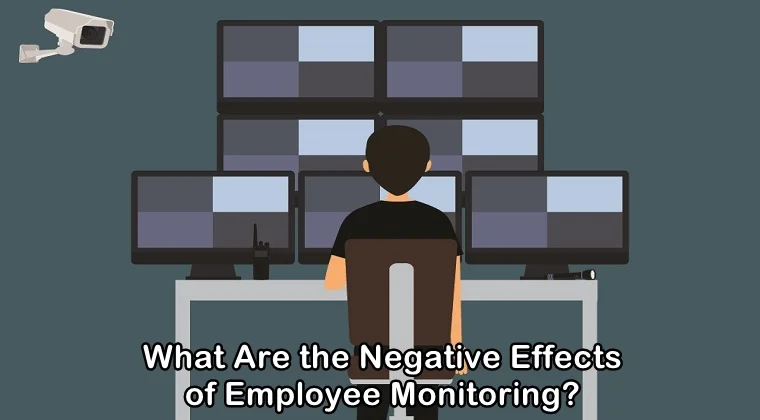What Are the Negative Effects of Employee Monitoring?

Most of the organizations, whether big or small, are slowly turning towards employee monitoring solutions. Employee monitoring has become the need of the hour now. However, there are many employers for whom employee monitoring still remains a dilemma.
To do it or not to do it? This has become a burning question for many companies now. Even those who would like to conduct employee monitoring in the workplace are clueless about how to go about it. Several employee monitoring tools can be used to monitor employees in the workplace.
It is said that companies use different types of employee monitoring tools in the workplace to enhance employee productivity, increase employee engagement, prevent data theft, improve the safety of employees.
While we do accept that employee monitoring brings a lot of benefits to the company, however, it also brings a host of disadvantages and negative effects that can be detrimental to employee morale and retention.
The Negative Effects of Employee Monitoring
You must have read several articles and blogs on the positive effects and advantages of employee monitoring. Now, it’s time for you to stay abreast of the negative effects of employee monitoring. It is important that companies weigh both the positive and negative sides of employee monitoring to decide to what extent it is vital for the business.
Some common types of employee monitoring tools include CCTV cameras, network monitoring, email monitoring, GPS tracking, web browsing monitoring, and social media surveillance.
Reduction in Employee Morale
When employee monitoring tools are set in place, employees know that they are being constantly watched and monitored by their employers. The presence of CCTV cameras in every room and the installation of employee monitoring software on their electronic devices can make them feel insecure and create a feeling of resentment and distrust between employers and employees.
The presence of employee monitoring tools in the workplace can also increase stress among employees because they will be under a lot of pressure and they need to perform with great care and maintain productivity.
Invasion of Privacy
Monitoring tools in the workplace increases the chances of privacy invasion. If employers happen to monitor their employees’ activities during off-hours, they can invade their privacy. Employers are not allowed to invade their employee’s privacy because then it can lead to distrust among employers and employees.
There should be no CCTV cameras in the restrooms and washrooms because these are certain areas where employees require privacy and want to enjoy their personal space. Therefore, privacy invasion is also one of the negative effects of employee monitoring.
False Sense of Security
When employers solely rely on electronic monitoring systems to keep a watch on their employees, it can create a false sense of security because some employers mistakenly believe that a monitoring solution is a tool that can be used instead of employer surveillance.
It needs to be kept in mind that no monitoring solution can replace human supervision. An electronic monitoring system should only be considered a method to increase the supervision process that is already set in place. So, employers should not completely rely on monitoring tools.
Discrimination
When an employer decides to access their employees’ computers, cell phones, web browsing history, email accounts, phone calls, and text messages, they start looking for reasons to terminate an employee, even if the termination is truly justified or not.
In the past, several cases have come forward where employers have fired employees for sending jokes via email from their work computers or distributing union emails at times of dispute.
These are some disadvantages of employee monitoring that every employer needs to keep in their minds. The best way is to inform employees before installing employee monitoring software on their devices.
All employers should know about the laws and regulations related to workplace privacy and employee monitoring before they can consider installing monitoring tools in the workplace. It is important to obtain an employee’s consent before monitoring their activity during office hours.








